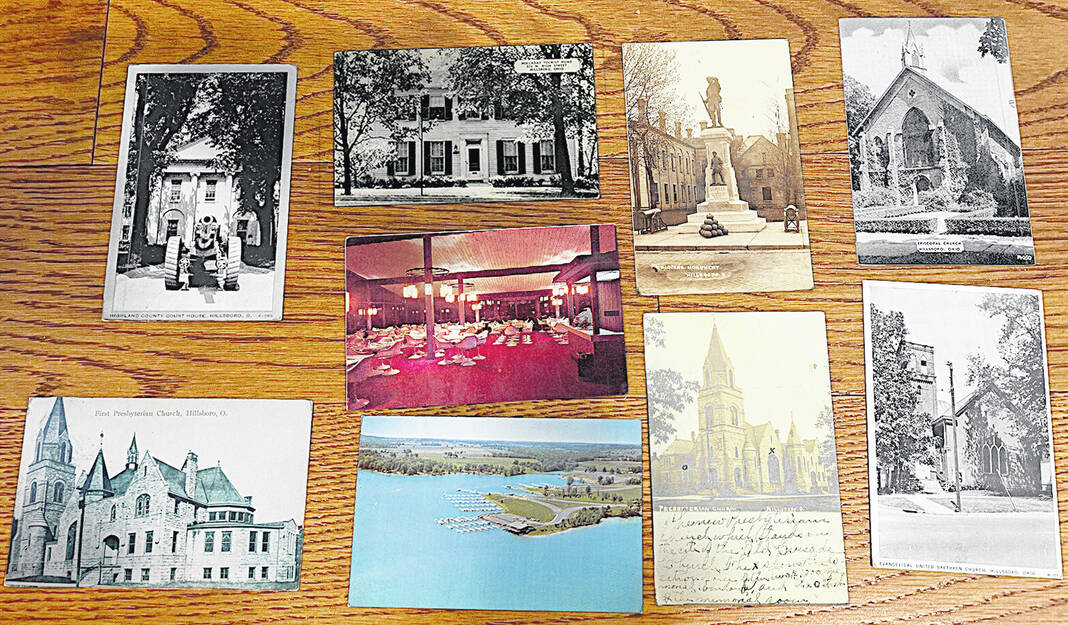
Long before Instagram posts documented family vacations with colorful images that could be instantly shared worldwide, before Facebook enabled people to narrate every minute of their everyday lives for all to see, there was the humble postcard.
A cursory search for, “Hillsboro, Ohio postcards” on reselling websites like Ebay that deal, among other things, in historical ephemera, revealed dozens of results. These postcards from the past are emblazoned with a myriad of images, ranging from depictions of the former Holladay Tourist Home, advertised on its postcard as being, “insulated for your comfort,” and which stood at 323 N. High St. in Hillsboro until its eventual demolition, to opulent photos of the East Shore Marina Restaurant from the mid-20th century, whose postcard caption encouraged patrons to “Boat-in or dine-in” to its deep red carpeted, mod-styled dining room, fully appointed with space-age PVC bucket chairs and requisite cylindrical floor ashtrays, vestiges of a bygone era.
Area churches, covered bridges, motels and hotels, are a few of the other scenes that have graced Hillsboro-themed postcards over the years.
The practice of studying and collecting postcards has a special word, just as coin or stamp collecting does — it’s called “deltiology.” According to experts on the avocation, there is a plethora of rules by which different postcards can be appraised for monetary value. These factors can include “condition, age and subject matter.” How rare the postcard is would be another factor that would be considered in its assessment.
For people interested in local history, though, these postcards — once sent through the mail as a common, everyday practice — may have nostalgic based significance that is secondary to cost.
Postcards became popular in the 20th century as a form of abbreviated communication. According to Diane Deblois, editor of The Ephemera Journal, there was, “a postcard craze,” beginning about 1910.
Deblois said that during this time, “The post office was inundated with picture postcards.” She said, making a contemporary comparison, that, “they operated a little like email” in that they were generally “offering holiday greetings, telling about where to meet, and spawning a huge collecting hobby whereby people exchanged postcards with strangers.”
“Postcard publishers sent salesmen in person, and canvassed by mail, to persuade small towns to invest in views of their buildings, etc.,” Deblois said.
Though postcards were first printed in the 19th century, according to to archivists, concerns about privacy prevented them from gaining in popularity immediately since many people did not like the idea of writing notes which anyone could read.
Eventually, the public overcame its initial trepidation and postcards became ubiquitous.
Though the postcard has fallen out of favor, replaced, as letters have been, by expedient, modern electronic communications, historical postcards tell stories that anecdotally capture the times and places of the past with personal narratives. Although perhaps meant to be nothing more than quick, informal salutations to friends, family and loved ones, postcards that have avoided being swept away by time have been afforded a new purpose their original senders probably never intended.
They aren’t just fleeting, “Hello, wish you were here,” greetings, but echoing waves to the future, saying, “I was here, this was here.”
Juliane Cartaino is a stringer for The Times-Gazette.


